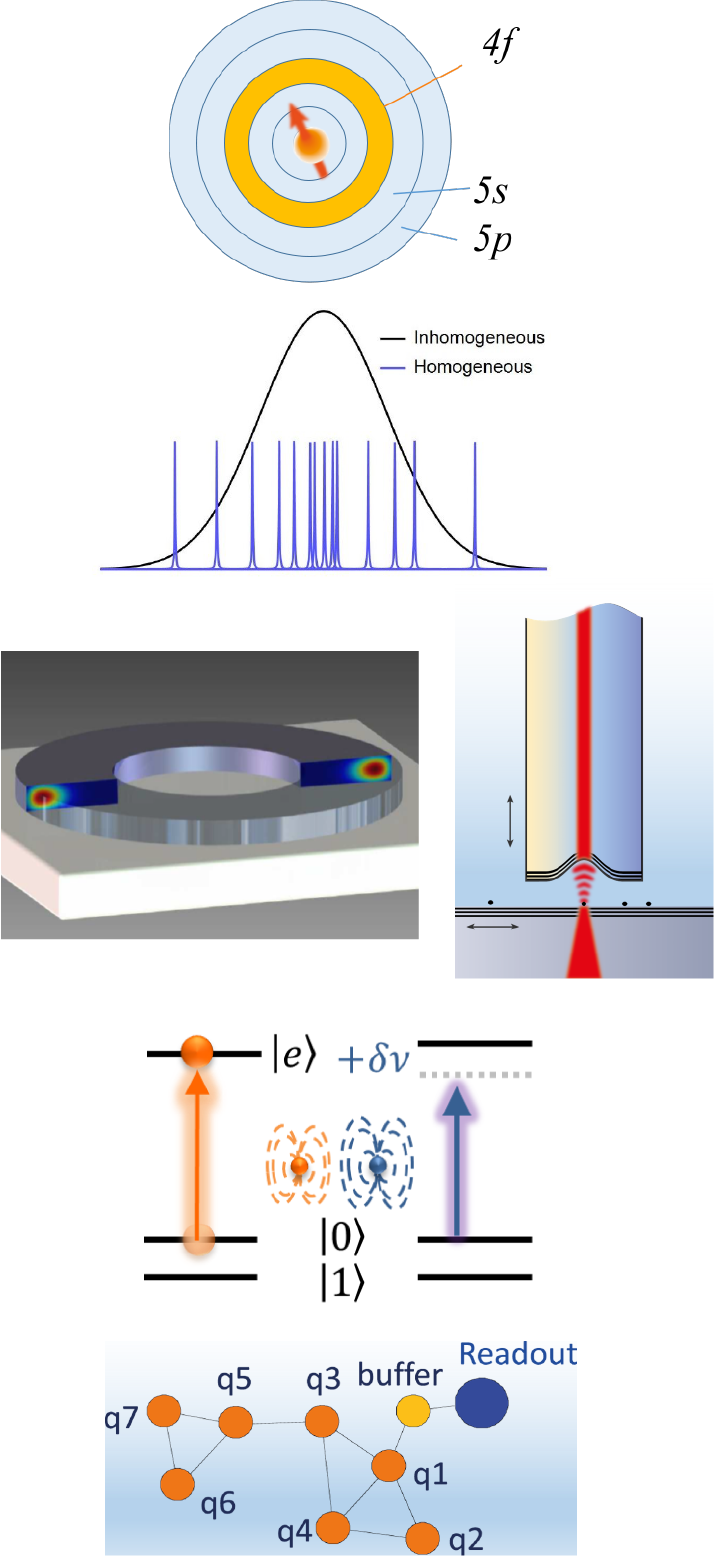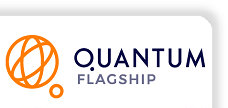This project aims at establishing individually addressable rare earth ions as a fundamental building block of a scalable quantum computing hardware and to overcome the main roadblocks of this platform. The goal is to realize elements of a multifunctional quantum processor node, where multiple qubits can be used for quantum storage, quantum logic, and for spin-photon quantum state mapping, e.g. for interconnectivity between processor nodes in a rare-earth quantum network. A particular emphasis is devoted to evidence the potential for scalability. The specific objectives are:
- Demonstrate high fidelity single qubit gates and single-shot readout
- Demonstrate high fidelity scalable two-qubit
 and multi-qubit gates with individual ions
and multi-qubit gates with individual ions - Demonstrate an efficient telecom spin-photon interface with indistinguishable photons
- Engineer scalable device elements – quantum-grade REI doped materials, market-ready tunable microcavities, cryogenic nanopositioning, lasers and cryocoolers
- Develop protocols for scalable multi-qubit nodes and propose a technologically relevant roadmap for rare-earth quantum computing, directing future technological efforts.
Expected Results
SQUARE will address the central challenges to build a scalable quantum processor network using individually addressable rare-earth ions, and develop the key elements to TRL3-4, laying the grounds for future technological developments. The consortium promotes young high-potential actors, e.g. by having several younger WP leaders, will contribute to the education of a new generation of quantum engineers, and support the public awareness of quantum technologies.
Methodology
- Nuclear spins of individual REI will serve as long-loved memory qubits.
- High fidelity single ion initialization, coherent manipulation, and single shot readout will be performed optically or with microwave and radiofrequency signals.
- Individual optical addressing of a large number of qubits (>103) is possible in the spectral domain due to the combination of large inhomogeneous broadening (10-100GHz) and narrow homogeneous transitions (<50kHz).
- Tunable fiber-based Fabry-Perot cavities (FFPC) and integrated LiNbO3 cavities with high finesse and low mode volume will be used for efficient readout by strong Purcell enhancement of 4f-4f transitions.
- Two-qubit gates will be demonstrated on different platforms via magnetic or electric dipole-dipole interactions.
- Efficient conversion of spin qubits into photonic qubits will be achieved by coupling coherent optical transitions to a cavity.
- Optimized REI doped materials for integration into photonic structures will be developed, the fiber cavity platform will be developed towards a deployable technology, and highly tunable lasers and tailored cryocoolers will be devised.


